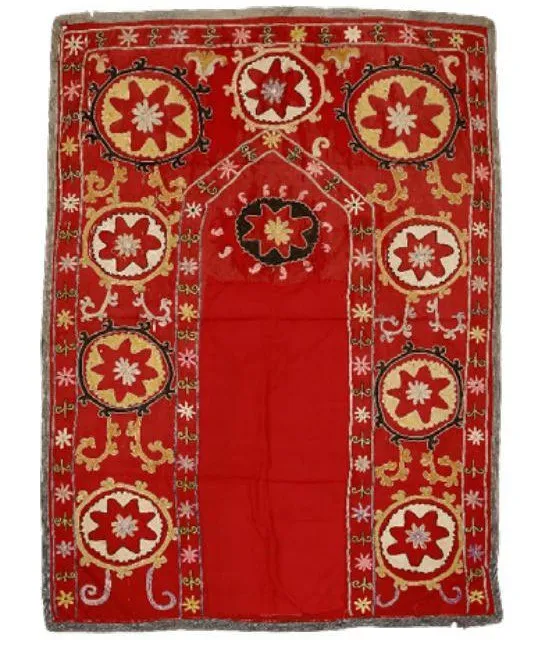It was a great honor for her to enter Anna and Alberto's treasury. She also recalls: “ a pile of folded fabrics were ready to be opened to view while he sat, crossed-legged and in euphoric silence, on the ground before it. Then, with a practiced and loving hand, he began unfolding each ‘morsel’ from what he termed his “tray of sweet delicacies,” and I tasted of their exquisite origin and nature, one by one. I was mesmerized by the enchanting variety of colours, designs and patterns that danced into view “.
Exquisitely decorative, ikat fabric was used for many purposes in cities and villages. The collection features wall hangings and robes. Its accessory use as coloured lining, hem finishing or ground to the embroidery makes each item even more precious. Uzbek ikat robes descend from the ‘Robe of Honour.’ These fabulous silk garments – marks of sovereignty, royal favour and affiliation – were diffused in many cultural traditions. Ikat was a favoured material for this status costume. In Bukhara, from about the second half of the 19th century to the early 20th, it achieved an exquisite pinnacle–the cut silk velvet type.
The inspired historian said: “Undoubtedly, the fabric’s grand flourishes and magnificent scale provided heady inspiration for a craftsman – its opulent, vernal coloration and lush texture seeming to invoke Flora herself, drunk with color, gambolling about the shiny piles of violet and green velvet “.
You can learn more about the topic in the book-album "The Cultural legacy of Uzbekistan in Italian Collections" (volume XXXII) in the series "Cultural Legacy of Uzbekistan in the World Collections".
The main sponsor of the project is the oilfield services company Eriell-Group.
_1_1.webp)

